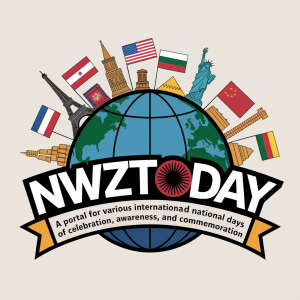Understanding World Stroke Day
Every year, October 29 marks World Stroke Day, a dedicated day to raise awareness about the serious nature and high rates of strokes globally. Initiated by the World Stroke Organization (WSO), this day serves as a reminder of the devastating impact strokes have on patients, families, and communities, while highlighting the importance of prevention, treatment, and support for survivors.
Why October 29?
The date was chosen by the World Stroke Organization to unite the world in addressing the growing concern of strokes. With millions affected every year, this day sheds light on the urgent need for timely medical care and preventative measures. The theme changes annually, focusing on different aspects of stroke awareness, from recognizing the symptoms to reducing risk factors.
The History of World Stroke Day
World Stroke Day was established in 2006 by the World Stroke Organization. It aimed to create a platform for education and advocacy. Since its inception, it has played a crucial role in spreading knowledge, encouraging research, and breaking down stigmas associated with strokes.
Over the years, this day has grown into a global movement with health organizations, governments, and individuals coming together to amplify the message: “Strokes are treatable and preventable.”
Significance of World Stroke Day
The statistics are staggering: strokes are the second leading cause of death globally and a major cause of disability. World Stroke Day emphasizes the importance of understanding risk factors such as high blood pressure, diabetes, and lifestyle choices. It also highlights the FAST acronym (Face, Arms, Speech, Time) to recognize stroke symptoms and act quickly.
Beyond awareness, this day aims to foster compassion and action for stroke survivors, advocating for better healthcare policies and support systems worldwide.
How is World Stroke Day Observed?
People across the globe participate in various activities to mark this day:
- Awareness Campaigns: Educational programs, webinars, and social media drives to inform the public about stroke prevention and management.
- Health Screenings: Free blood pressure, cholesterol, and glucose tests to identify risk factors early.
- Fundraising Events: Charity runs, walks, and auctions to support stroke research and survivor care.
- Support Groups: Communities come together to share experiences and provide emotional support to survivors and their families.
These efforts collectively aim to reduce the global stroke burden and improve the quality of life for those affected.
Fun Facts About Strokes
- The human brain uses about 20% of the body’s oxygen supply, making it highly vulnerable to strokes.
- Strokes are not just an “elderly problem”—they can affect people of any age, including children.
- “Mini-strokes” or Transient Ischemic Attacks (TIAs) are warning signs and should never be ignored.
- Regular exercise can reduce the risk of stroke by up to 27%.
Call to Action
This World Stroke Day, take a pledge to prioritize your health and the health of those around you. Share the FAST message, encourage loved ones to get regular check-ups, and support stroke-related initiatives in your community. Together, we can make a difference and save lives!
Remember, prevention is better than cure, and awareness is the first step towards a healthier world.









